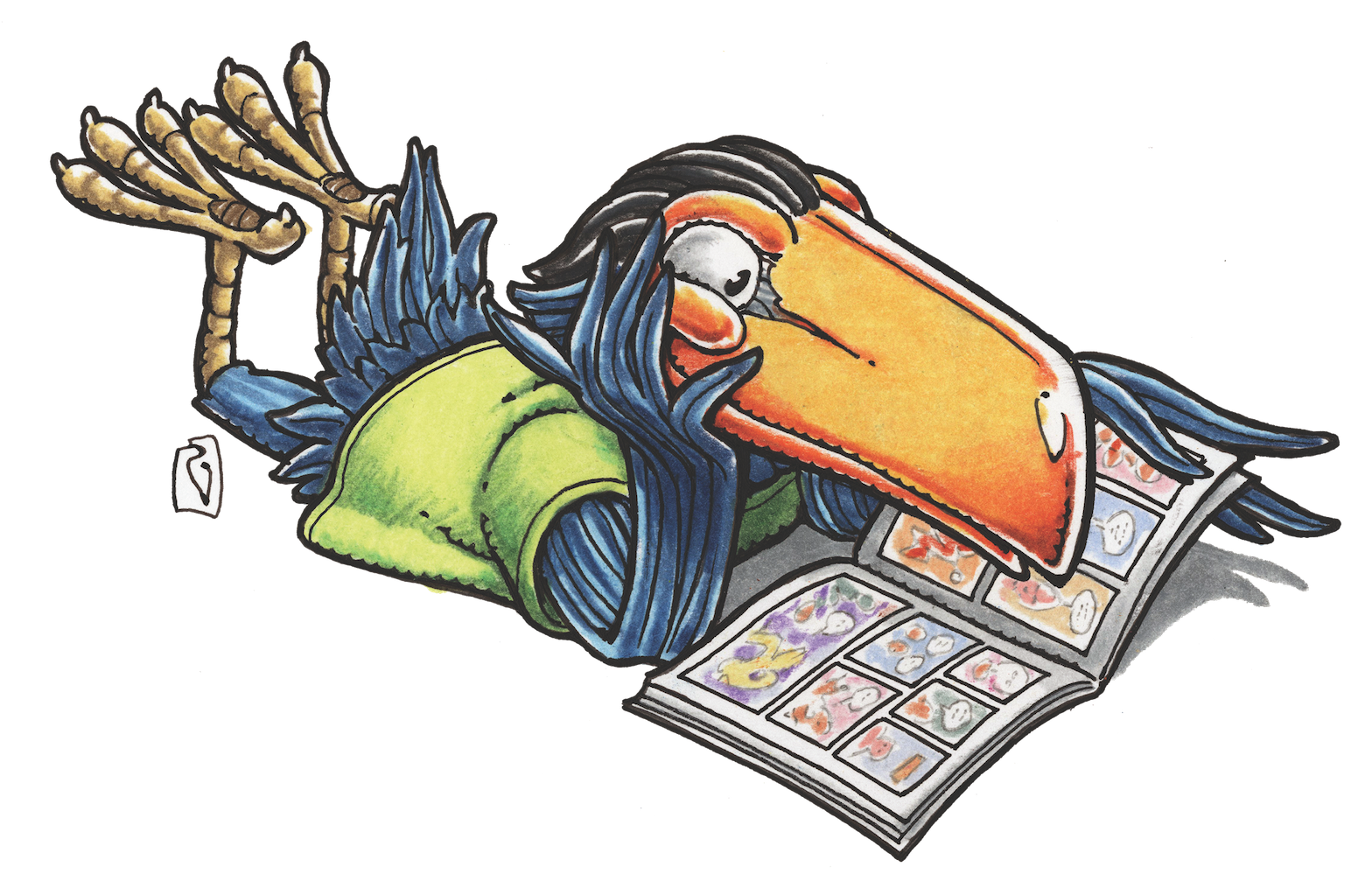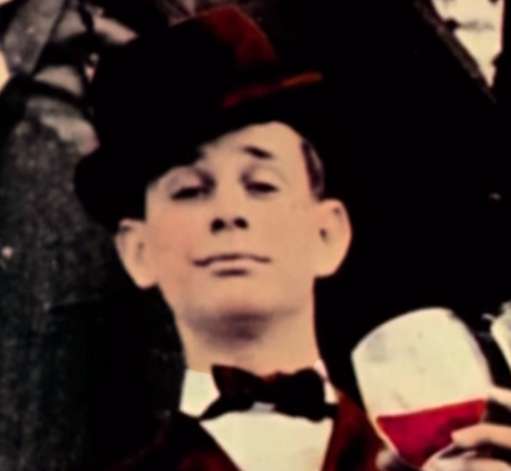Carousel By Jesse Hamm
Carousel #001: How to Draw Everything!


Comic-Con welcomes our newest monthly contributor to the Toucan Blog, Jesse Hamm! Jesse has worked as an essayist, portraitist, storyboarder, and book illustrator, and has been drawing comics professionally for 15 years. He has drawn comics for DC, Marvel, Dark Horse, Dynamite, BOOM!, and others, including work on such characters as Batman, Hawkeye, Flash Gordon, Sherlock Holmes, and The Phantom. His next comics project is a novel-length science fiction thriller. Jesse is a member of Helioscope, the largest studio of comic book artists in North America, and he lives near Portland, Oregon, with his wife, Anna. For more info, visit his portfolio at http://helioscopepdx.com/jesse-hamm/ or @Hamm_Tips on Twitter. Steve Lieber, our previous contributor, hand-picked Jesse as his replacement. Steve’s contributions to the Toucan blog live on here on the website … click here to read all 52 columns!
Hello, and welcome to my first column here at Comic-Con’s Toucan Blog. I’m pleased and daunted to be taking the reins from my studiomate, Steve Lieber, who has offered such a treasure trove of great tips and advice here over the years. If you’re new to this column and haven’t yet done so, I hope you’ll peruse the archive of Steve’s columns, and pocket some of his many gems.
Let me start off by telling you a bit about myself. I came to comics through the self-publishing boom of the ’90s, writing, drawing, and publishing such titles as Savage Daisies and Comics To Bore And Confuse You. In 2005, I moved to Portland and joined Helioscope, a collective of two dozen local comics professionals. Since then, I’ve earned my living drawing comics for various publishers, as well as book illustrations, advertising art, storyboards, portraiture, and so on. I’ve also taught art on occasion, and I write @Hamm_Tips, a cartooning tips account on Twitter. My goal each month here at Carousel will be to share advice about drawing comics, as well as to share insights into the work and methods of great cartoonists of the past and present, foreign and domestic.
But I don’t want to get ahead of myself. Today, I’d like to begin with something simple and brief. Namely, HOW TO DRAW EVERYTHING! Or at least, how to divide everything you’ll be called upon to draw into manageable categories. Breaking up subjects of study this way makes it easier to identify and work on areas where you wish to improve.
Listed below are the five categories of objects that a cartoonist will likely draw, along with the names of artists worth studying who excel in each category.
PEOPLE
People (including anthropomorphic aliens and creatures) will command most of the reader’s attention, and convey most of your story. So, of all the things that appear on a page, your people must be drawn with the greatest care. The behavior of the eyes and hands, and the overall posture, are especially important, since those things say the most about what your character is thinking and doing. It’s also important to keep each character recognizable from panel to panel, and to make sure they are clearly distinguished from each other. Anatomy is often considered the most important part of learning to draw people … but, in comics, it’s not as important as the priorities mentioned above.
Nick Cardy’s comics and covers are full of the attractive, powerful characters one expects from superhero tales, but he also fills them with a trait that often eludes superhero artists: a convincing humanity. Their faces, body language, and even—somehow— the lines he uses to delineate them exude warmth and emotion. His work is a welcome reminder that drawing people is less about anatomy than it is about soul.
BEASTS
This category includes creatures both real and fanciful, from insects to house cats to planet-eating monsters. I recommend studying common animals first, like cats, dogs, and horses, before moving on to the more exotic creatures. While practicing mythological beasts, look at the animals from which they are derived—lizards for dragons, apes for Sasquatch, etc.
Cartoonist Claire Wendling hasn’t drawn comics in many years, but her sketches of animals are unsurpassed for their grace, charm, and muscular power. Her horses and cats are a special treat, but she enjoys drawing all sorts of creatures: cute and scary, big and small. And so should we!
MACHINES
This includes any crafted mechanisms, tools, or props … everything from super-computers to pencil sharpeners. This category also includes items from the past, such as catapults or wagons, items from the future, such as robots or spacecraft, and altogether fanciful items, such as time machines, or crystal balls. I even include objects with non-moving parts here, because the tools and techniques used to draw them are the same: compasses, rulers, and a grasp of perspective.
In his Akira comics, Katsuhiro Otomo demonstrates his mastery of all manner of machinery. Vehicles, weapons, industrial equipment—both real and imagined—all of it is drawn with the authority that comes from immersing one’s self in visual reference. And the authentic look of even his most trivial props gives power to the rest of his work.
STRUCTURES
Skyscrapers and houses are probably the most common structures we see in comics, but this category also includes laboratories, restaurants, space stations, bridges, roads, castles, igloos, and tree houses. Exteriors AND interiors! Unless your entire story takes place in the wilderness, your characters—and therefore your readers—are going to spend a lot of time in and around the structures you draw. So it pays to learn to draw them well!
For a thorough but easy-to-understand primer on perspective, read Perspective Made Easy, by Ernest Norling. For inspiring structures, look up the work of Francois Schuiten, a cartoonist whose towering buildings will thrill you, and give you a sense of what architecture can mean to a story.
ELEMENTS
This includes pretty much any non-sentient things that AREN’T drawn with a ruler. So: plants, rocks, water, fire, smoke, food, lightning, magical energies, etc. These “elements” can be useful for guiding the eye through a panel, and balancing a composition. They can also be drawn relatively quickly, and can offer you the chance to go crazy with fun textures. But don’t let the fun fool you—this stuff should still have a strong basis in reality. Badly drawn leaves and fruit can end up looking like weird Christmas decorations, pushing your readers right out of the story.
In both his Blueberry comics and his various fantasy stories, Moebius (AKA Jean Giraud) celebrates a vast array of organic objects and textures. His foliage, landscapes, and alien oddities will make you want to sharpen your pencil and fill your pages richly with scenery.
DONE! That covers pretty much everything you’re likely to draw in any comics story.
Examples of art by the artists I named can easily be found online; I encourage you to look them up, for examples of inspiring work in each category.
I also encourage you to note the category in which you feel weakest. Which subject do you find the hardest to draw? Fill a folder with 50 photos of such from the web, print and slip ’em in your sketchbook, and draw a few whenever you sit down to sketch. Soon, you’ll feel that weakness turning to strength.
See you next month!